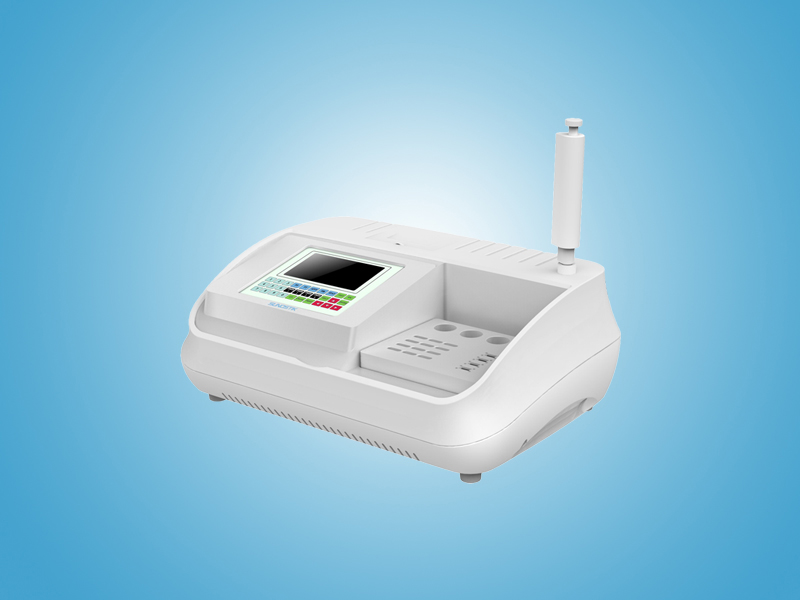
Release time:2021-09-06
Since medical plastics are in contact with liquid drugs or human bodies, the basic requirements for them are chemical stability and biological safety. Medical plastics in some countries usually need to pass FDA certification and uspvi biological testing, while medical grade plastics in China usually need to pass the testing of relevant testing centers.
Medical devices can be divided into in vitro diagnosis, medical consumables, medical devices and pharmaceutical equipment. Plastic is widely used in medical devices because of its low cost, easy processing, light weight and good toughness.

According to the different use environment of medical devices, the requirements for polymer materials are also different, but generally speaking, they should have the following properties:
(1) Good physical and mechanical properties, which can meet the needs of relevant functions;
(2) Good chemical resistance, can meet the service life in the service environment, and will not affect the relevant performance after disinfection;
(3) Good molding performance, easy to process into products of various shapes;
(4) Non toxic, no "three carcinogenic" (carcinogenic, teratogenic, mutagenic) effects, no pyrogen reaction, low content of soluble substances and soluble substances;
(5) Do not damage adjacent tissues, do not interfere with the immune mechanism of the body, and do not cause calcification on the surface of the material;
(6) It has good anticoagulation performance. When the material is in contact with the blood, it will not cause the reduction of blood cells after hemolysis, will not cause the denaturation of proteins in the blood, and will not destroy the formed components in the blood;
(7) The material has sufficient stability when implanted into the body, and the mechanical properties will not change after long-term use (except for degradable materials);
There are about a dozen kinds of commonly used medical plastic materials, including polyethylene (PE), polypropylene (PP), polyvinyl chloride (PVC), polyurethane (PU), polytetrafluoroethylene (PTFE), polycarbonate (PC), polystyrene (PS), etc. PVC and PE account for 28% and 24% respectively; PS accounts for 18%; PP accounts for 16%; Engineering plastics account for 14%.
1. PVC
PVC is a low-cost amorphous plastic with excellent chemical resistance and microbial resistance. According to market estimates, PVC accounts for 28% of the medical plastic market. The advantages of PVC resin are low cost, wide application range and easy processing. The disadvantage is that PVC, as a polar material, has adsorption on some drugs, and the plasticizer DEHP may precipitate, which is harmful to human body.
Medical PVC products include: blood bags, hemodialysis tubes, respiratory masks, oxygen tubes, urine bags, artificial ear and nose, etc.
2. Polyethylene
PE is a general plastic with large output. It has the advantages of good processing performance, low cost, non-toxic, tasteless, good biocompatibility and so on. Ordinary PE can usually be used for medicine bottles, needle caps, syringe plungers, flow regulators of infusion sets, infusion sets and syringe packaging bags.
UHMWPE (ultra high molecular weight polyethylene) is a special engineering plastic with high impact resistance, strong wear resistance (the crown of plastics), low friction coefficient, biological inertia and good energy absorption characteristics. Its chemical resistance is comparable to that of polytetrafluoroethylene, and it is an ideal material for artificial hip joint and artificial joint.
3. Polypropylene
PP has excellent chemical resistance, fatigue resistance and good heat resistance, and can be sterilized at a temperature above 100 ° C. It is easy to process and has no environmental stress cracking problem. Medical PP has higher transparency, better barrier and radiation resistance.
It can be used in infusion bags, disposable syringes, connectors, parenteral nutrition packaging, dialysis membranes, etc.
4. PS, K Resin
The dosage of PS in the medical field is second only to PVC and PE. Its hard and brittle texture and high coefficient of thermal expansion limit its application in engineering. In recent decades, the development of modified polystyrene and styrene based copolymer has overcome the shortcomings of polystyrene to a certain extent. K resin is one of them.
K-Resin is a block copolymer polymerized with styrene and butadiene as monomers. Its main characteristics are high transparency, good impact resistance, low density, strong coloring power, excellent processing performance and non-toxic.
K resin is mainly used for medical plastic products with high technical difficulty, high technical content and high added value, such as artificial lung oxygenator greenhouse, artery outlet, regenerative artery outlet, cardiac suction head, aortic intubation, blood filter, respirator, thermostat, etc. K Resin meets the class vi-50 requirements of the American drug packaging law.
5. ABS
BS plastic is a terpolymer of acrylonitrile (a), butadiene (b) and styrene (s). It has certain rigidity, hardness, impact resistance, chemical resistance, radiation resistance and ethylene oxide disinfection resistance.
The medical applications of ABS are mainly used as surgical tools, roller clips, plastic needles, tool kits, diagnostic equipment and hearing aid shells, especially the shells of some large medical equipment.
6. Computer
PC is characterized by high toughness, strength and heat-resistant steam disinfection. These characteristics make PC become hemodialysis filter, surgical tool handle and oxygen tank; The applications of PC in medicine also include needle free injection system and perfusion instrument, blood centrifuge bowl and piston.
7. Polytetrafluoroethylene
PTFE is a fluoroplastic, known as the king of plastics. Among all plastics, it is known that the friction coefficient is very low and the chemical resistance is good. It has good biocompatibility and anticoagulation performance, does not decompose, and has no adverse reactions and aging phenomenon in human body. It has excellent heat resistance, continuous use temperature of 260 ℃, and can be disinfected at high temperature.
It is widely used in all kinds of artificial trachea, esophagus, bile duct, urethra, artificial peritoneum, dura mater, artificial skin, artificial bone, etc. in the medical field.
8. Thermoplastic polyurethane
Thermoplastic elastomer (TPU) has excellent low-temperature flexibility, hydrolytic resistance, anticoagulation and antibacterial properties. It can be used for medical catheter, artificial heart, oxygen mask, drug release equipment, IV connector and sphygmomanometer, external wrapping cloth, etc.
9. Degradable plastics
Biodegradable plastic is an ideal medical material. Inert medical materials (i.e. ordinary medical materials with relatively stable performance) generally have the problems of poor long-term compatibility and the need for secondary surgery. Degradable materials overcome these shortcomings. Commonly used medical biodegradable materials include PLA and PCL.
PCL has good biodegradability and drug permeability, and can stably release drugs for a long time. PCL has good compatibility with biological cells. Cells can grow normally on its scaffold and degrade into CO2 and H2O. It is used for drug delivery carriers, cosmetic materials, vascular stents, surgical sutures, cell tissue culture media frames, etc.
PLA has good mechanical properties and biocompatibility, and can be used in medical sutures and implants. Moreover, PLA products can form a weak acidic environment on the surface, and have antibacterial and anti mildew effects. If other antibacterial agents are added, the antibacterial rate can reach more than 90%, which can be used for antibacterial packaging of products.

